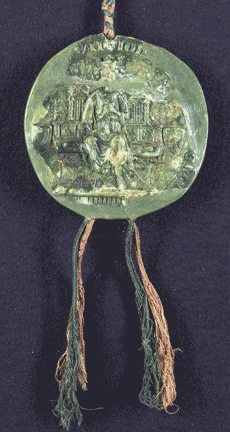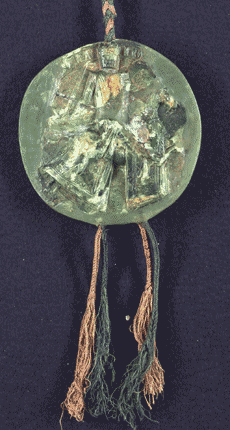| | Home | Resources | Schools Programme | Teachers | Site help | About us | Contact us | |
| You are here: Home > Resources > Scottish Wars of Independence > John Balliol, king of Scotland, 1292-1296 |
Unit 2: John Balliol, king of Scotland, 1292-1296During the first two years of his reign, John Balliol attempted to exert his authority as king of Scotland. He had Edward I return the Scottish records that had been taken south to Berwick for examination during the Great Cause. In his first parliament at Scone in February 1293, Balliol passed an act setting up three new sheriffdoms in Skye, Argyll and Kintyre as a means of extending government control over the western highlands and islands. It was not long before Edward I attempted to assert his overlordship of Scotland at every opportunity. While Balliol dealt with legal cases in his parliament, Edward's insistence on hearing appeals from unsatisfied litigants in Scotland struck at the heart of Balliol’s kingship. King John was in an impossible position. Relations between Scotland and England finally broke down over King Edward I’s war with France. In 1294 Edward ordered King John and the nobility in Scotland and Wales to provide military service. The Scottish parliament, in July 1295, concerned at Balliol's failure to stand up to the English king, appointed a council of bishops, earls and barons to rule in his name. The same parliament sent envoys to negotiate a treaty between Scotland and France which was signed on 23 October 1295. This Franco-Scottish alliance was of great concern to Edward so he retaliated and marched north with his army attacking Berwick and Dunbar, proceeding as far north as Elgin. On 2 July 1296, King John surrendered his kingdom to Edward and was held captive in England. Many Scottish nobles, clerics, knights and burgesses, including Robert Bruce, renounced their alliance with France and swore fealty to the English king. View the timeline of events in the Scottish Wars of Independence | ||||
Indenture between King Edward I and John Balliol, King of Scotland, for the return to Scotland of all the documents relating to the Great Cause, 1292 | ||||
  | ||||
Summary of documentAn indenture made between Lord Edward King of England Lord Superior of the Kingdom of Scotland, and Lord John, formerly King of Scotland, concerning bulls, writings, letters, rolls of the accounts of the Sheriffs and other officers of the said Kingdom of Scotland, and concerning other memoranda found in the Castle of Edinburgh, the Kingdom of Scotland being in the hands of our lord the King of England, and delivered by command of the said King of England to the aforesaid King of Scotland, in the year of our Lord one thousand two hundred and ninety-two, and in the twenty-first year of the reign of the aforesaid King of England. (Translation from National Manuscripts of Scotland, Vol. 1, p. lxxiv) Notice the jagged edge at the top of the document. This shows that it is one half of a legal document that was drawn up between two parties agreeing to a particular deed or transaction. An indenture would be written in duplicate on the same piece of parchment or paper and then each copy was separated by cutting a jagged line between them. Each party would take away their own copy and if required, the ‘teeth’ of the two parts could be fitted together at a later date to confirm the authenticity of the document. This image shows the Scottish copy of the agreement with King John’s seal attached at the bottom. This 13th century seal is not intact but the front shows King John sitting on his throne and the reverse as an equestrian warrior defending his people. Both of these images were commonly used by monarchs in Western Europe as a means of displaying their positions of power and influence. |
||||
|
|